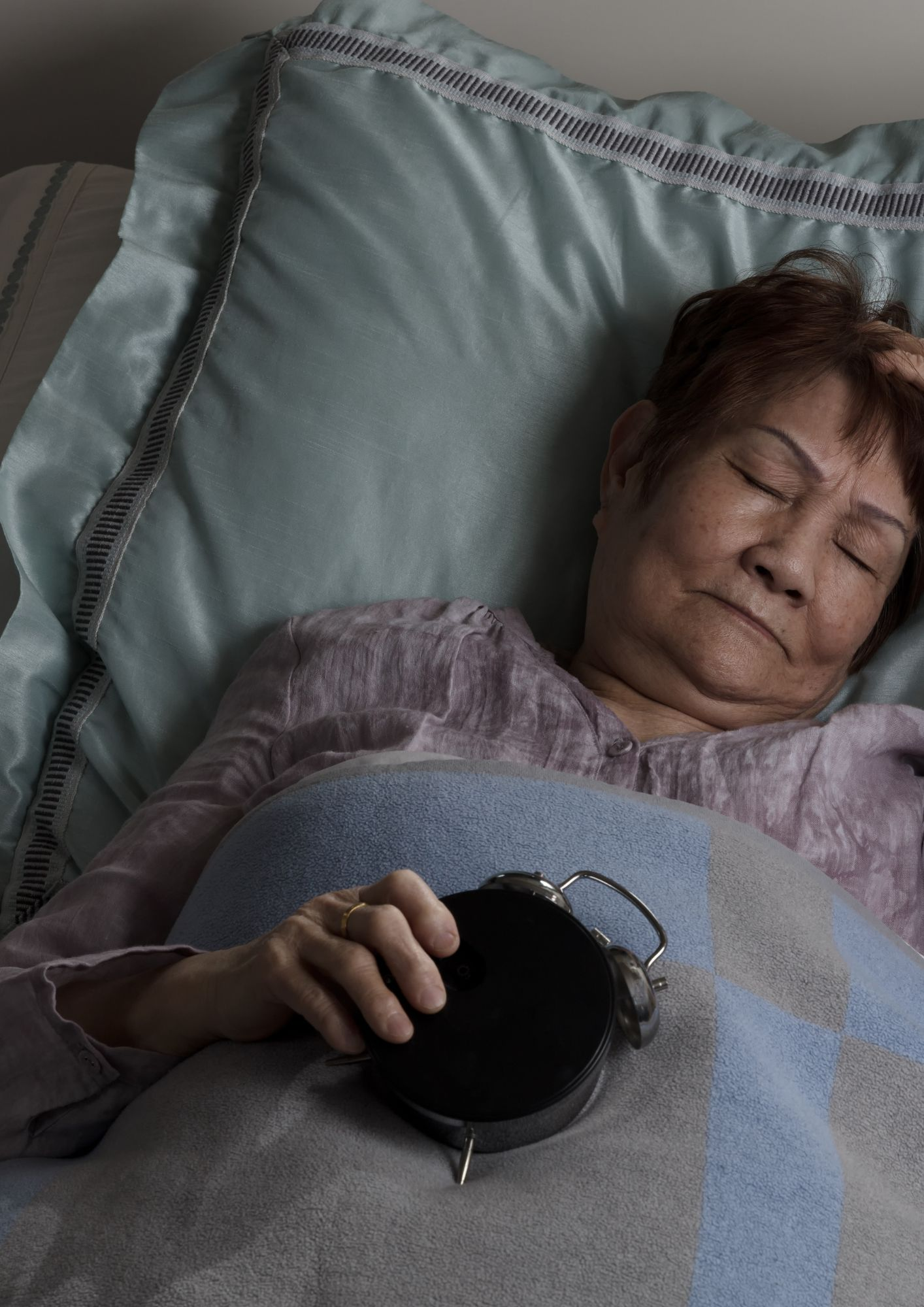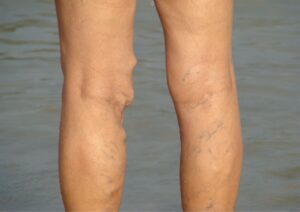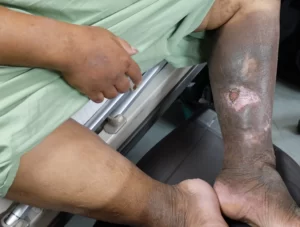Table of Contents
For sufferers of Restless Legs Syndrome (RLS), an uncomfortable tingling sensation in their lower limbs can make even basic tasks seem like a torment. Characterised by urges to move the legs, RLS is more prominent among female children than male adults. Those with this condition may need to shake and bend their feet to remain comfortable while resting or lying down. However, active individuals often experience intensified symptoms, which further disrupt sleep patterns.
What is restless legs syndrome (RLS)?
RLS is a condition that can keep you fr
om getting the sleep your body needs. It causes an uncontrollable urge to move, rub or even tear muscles in one’s legs and sometimes arms – all while trying to rest. This sensation often worsens when sitting for long periods of time such as during car rides or movies at the theatre; making it extremely challenging to get quality shut-eye! As unpleasant as this frustrating affliction may be, there are options out there which allow sufferers relief – so don’t lose hope!
Restless Legs Syndrome and Periodic Limb Movement Disorder the same thing?
According to The Merck Manual, which has been one of humanity’s most reliable sources on medical info since 1899, RLS sufferers may also experience PLMD. This disorder consists of involuntary limb spasms that occur when sleeping – so much so that often patients are completely unaware and it goes unnoticed!
The limbs of a person with PLMD will often twist and turn involuntarily while they sleep. A further benefit of the movement is that it does not cause unpleasant sensations, and the fact that it occurs while the patient is sleeping means they are typically not conscious of the movement.
What triggers restless leg syndrome?
Restless Legs Syndrome is an enigma, as the cause of it remains a mystery in most cases. It has been known to run in families and certain gene variations have been linked with RLS. In addition, its connection to depleted amounts of iron stored within your brain could be another possible explanation for this disorder’s origin. Studies suggest that disruptions in dopamine production may also play a role; individuals living with Parkinson’s disease are at risk of developing RLS due to their compromised dopaminergic pathways. Furthermore, various other conditions appear to have ties or accompany RLS like diabetes or renal failure – increasing one’s chances even further!
RLS appears to be related to or accompany a number of other factors or underlying conditions, including the following:
Renal failure requiring dialysis treatment and end-stage renal disease
Neuropathy (nerve damage) (nerve damage)
Sleep deprivation and other sleep-related conditions, such as sleep apnea, can have serious health consequences.
Alterations in hormone levels, particularly during the third trimester of pregnancy. In the vast majority of instances, patients report that their symptoms have subsided within a span of four weeks after giving birth.
Consumption of alcoholic beverages, tobacco products, and coffee
Some anti-nausea drugs, antipsychotic drugs, antidepressants that increase serotonin, and cold and allergy medications that contain older antihistamines are examples of medications that could make your RLS symptoms worse.
Varicose veins
What are the symptoms of restless legs syndrome (RLS)?
Sufferers of Restless Leg Syndrome (RLS) often report a feeling of relief when their legs are in motion. This could mean constantly pacing the floor or moving around while sitting below them at night, as symptoms worsen and can be harder to fall asleep with late into the evening. On some days RLS might not even appear but then there will also be severe bouts that last beyond midnight and disrupt daytime function too. The severity is unpredictable though it typically occurs once or twice each week for those suffering from moderate cases of this disorder.
The severity and frequency of RLS symptoms can change from person to person, as can the severity of the symptoms from day to day. Your symptoms may only appear once or twice a week if you have moderately severe RLS, but they will likely cause a significant delay in the onset of sleep, along with some disruption in your ability to function during the day. When restless legs syndrome (RLS) is severe, symptoms manifest themselves more frequently than twice per week.
The following are some of the symptoms that can be caused by RLS:
Variations in mental state
Exhaustion as well as excessive drowsiness during the day
Difficulties in concentrating on things
Memory difficulties
Reduced levels of productivity
Both depressive and anxious states
You may go through remissions, which are periods during which your symptoms improve or disappear completely for a few weeks or months. Remissions typically occur in the earlier stages of the disorder. On the other hand, symptoms frequently return and frequently become more severe over the course of time.
What does restless leg syndrome indicate?
Neurologists are medical professionals who specialise in the diagnosis and treatment of conditions that affect the nervous system. Some neurologists are of the opinion that the symptoms of restless legs syndrome may be related to how the body processes a chemical known as dopamine. The neurotransmitter dopamine plays a role in the control of muscle movement and may be to blame for the involuntary leg movements that are characteristic of restless legs syndrome.
What causes restless legs at night in bed?
For those who suffer nighttime fatigue in their legs, it could be due to the natural drop of dopamine levels. Damage to nerve cells can lead not only to muscle sprains but also unwanted motion that you didn’t ask for!
Periodic limb movements in sleep (PLMS)
millions of people around the world suffer from sleepless legs syndrome (PLMS). This condition causes their legs to jerk and turn suddenly, often during sleep. It’s disruptive not only for those who have it, but even their partners as well! With movements occurring every 10-60 seconds throughout the night, PLMS can leave no one with a good nights rest.
Restless Legs Syndrome Diagnosis
The condition known as restless legs syndrome (RLS) is difficult to diagnose because there is no one test that can determine its presence. The International Restless Legs Study Group has proposed the four criteria that are essential in the diagnosis of RLS, which are as follows:
An uncontrollable urge to move the legs, typically accompanied by or resulting from unpleasant sensations in the legs.
Urge to move the legs is present when resting or inactive.
Urge to move the legs is partially or completely relieved with movement.
Urge to move or unpleasant sensations are worse at night as compared to the day or only occur at night.
Confirmation of the diagnosis can be enhanced by a positive response to dopaminergic medications as well as a family history of the condition.
Sleep tests
An overnight sleep study may be recommended for individuals with suspected cases of Restless Leg Syndrome (RLS), Periodic Limb Movement Disorder (PLMD) or other possible accompanying sleep disorders.
Polysomnography is a specialised test that can measure body responses during the night, such as heart rate and brainwave activity, to analyse involuntary movements while asleep and ascertain any abnormalities in respiratory patterns which could explain restlessness. Through these tests clinicians look to uncover biophysical causes behind poor quality sleeping behaviour so that treatment options can then be prescribed accordingly.
Blood tests
With no definitive diagnostic blood test available for Restless Legs Syndrome (RLS), medical practitioners may suggest checking iron stores via a serum ferritin test, or other conditions such as kidney disease and vitamin deficiencies.
Taking a blood sample can be risky in certain circumstances – if the body’s filtering systems are not operating optimally anaemia could result – so it is important to assess any potential risks before proceeding with testing. If tests show an inadequate level of iron, supplementing this nutritive mineral through tablets may play a role in reducing RLS symptoms.
Nerve conduction studies
This diagnostic test evaluates the velocity of electric signals travelling to nerves, providing insight into whether or not a person is afflicted with peripheral neuropathy.
What is the best natural way to stop restless leg syndrome?
To reduce the symptoms of restless leg syndrome, physical relaxation is key.
Taking a warm bath and massaging your legs can relax muscles, while applying cool or hot packs to troubled areas may also alleviate discomfort.
Additionally, creating an optimal sleep environment by maintaining good sleep hygiene, such as going to bed and rising at the same time daily for seven hours nightly, will help with fatigue-related exacerbations of RLS symptoms.
Exercise has been shown to be beneficial in reducing pain, but it should not be overdone due to worsening effects on affected limbs. Avoiding caffeinated products like coffee or chocolate could further make a difference if one isn’t careful about intake levels already.
What vitamins help restless leg syndrome?
A study revealed that a combination of Vitamins C and E is an effective, safe treatment for the short-term relief of RLS patients. For those with low levels of Vitamin C or E, eating foods high in these nutrients may prove beneficial to relieving symptoms associated with RLS. Examples include pumpkin & sunflower seeds (Vitamin E) and oranges/orange juice, peppers & strawberries (Vitamin C).
Additionally, as Vitamin C allows your body to better absorb iron which can reduce RLS risk – it’s possible this dual approach could provide further benefits when managing Restless Leg Syndrome conditions.
What is the best medication for restless leg?
Codeine
Opioids medications, such as codeine, are powerful tools to combat intense symptoms. However, they can also become addictive if taken for too long – a risk which should be carefully managed with your doctor when using them for relieving the common symptoms of Restless Leg Syndrome or painful leg cramps.
Sleep aids and muscle relaxants (benzodiazepines)
Even though certain drugs can improve the quality of sleep, they may not prove helpful when it comes to alleviating leg sensations and could even lead to drowsiness during daylight. Therefore, such medications are only recommended as a last resort if alternative treatments fail.
Drugs that increase dopamine (dopaminergic agents)
Treatment of Restless Leg Syndrome (RLS) through pharmacological means can have mild side effects initially, but is shown to be less effective over time.
The primary medications approved for RLS treatment manipulate dopamine levels in the brain. These drugs are associated with difficulties like fatigue, lightheadedness, as well nausea; however, more severe complications, such as impulse control disorders, including compulsive gambling behaviour or daytime sleepiness, may also occur.
Drugs affecting calcium channels
The use of calcium channel blockers, such as gabapentin and pregabalin , has shown benefit in treating Restless Legs Syndrome for select patient populations.
FAQ
How do you fall asleep with restless legs?
By adjusting your lifestyle habits, such as cutting down on caffeine and alcohol. Incorporating a few simple practices, like stretching while taking phone calls or watching TV, can help relieve discomfort in the feet.
Applying an ice pack for a short period of time may provide additional relief before bedtime, alongside avoidance of large meals late at night and implementation of relaxation-inducing activities like yoga or meditation. Taking breaks with day trips are also recommended!
Is restless leg syndrome serious?
Restless Leg Syndrome (RLS) is a disorder which, although not life-threatening, can severely disrupt sleep and lead to depression.
Individuals suffering from the condition may benefit from resources like RLS-UK; an organisation dedicated to helping those afflicted with this challenging yet manageable syndrome.
How do you stop restless legs when lying down?
Combating restless legs syndrome can be achieved through various lifestyle changes. Soaking and massaging your legs, applying hot or cold packs, maintaining good sleep hygiene, engaging in exercise and cutting down on caffeine intake are all important steps to take for relief from this condition.
Additionally, you could consider the use of foot wraps and vibrating pads as added preventative measures against RLS symptoms when lying down.
SOURCES
https://www.mayoclinic.org/diseases-conditions/restless-legs-syndrome/symptoms-causes/syc-20377168
https://www.ninds.nih.gov/health-information/disorders/restless-legs-syndrome
https://www.healthdirect.gov.au/amp/article/restless-legs-syndrome
https://www.betterhealth.vic.gov.au/health/conditionsandtreatments/restless-legs-syndrome-rls
https://my.clevelandclinic.org/health/diseases/9497-restless-legs-syndrome













